Your mobile home should have the best insulation to improve your family’s comfortability during winter. For your information, proper insulation also reduces the utility bills in your home. Some people even end up saving up to 50% in energy bills with energy-efficient insulation.
Most mobile homes set up before the HUD code came into existence have been reported to have poor insulation. The insulation in such units is 1-4-inches. Therefore, installing or adding insulation in such homes will guarantee more comfort, especially during a colder winter or hotter summer.
So, how do you install insulation to your mobile home in order to achieve ultimate energy-efficiency? Keep reading to find out.
How to Add Insulation to a Mobile Home
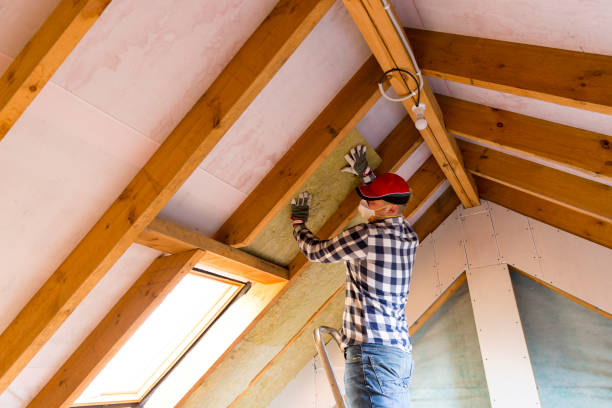
Insulating a mobile home can be easy if you understand the procedure. Let’s go through everything below:
Benefits of Adding Insulation to Your Mobile Home
You might wonder what benefits you will get from adding insulation to your mobile home. For your information, proper insulation presents you with benefits that you could never imagine.
As per the Department of Energy, all mobile homes developed before the Department of Housing and Urban Development codes (HUD codes for manufactured homes) have room for added insulation. You can even add insulation to modern homes if you so choose.
Let us consider theses benefits below:
Increased Comfort
Almost everyone searching for a home, let alone a mobile home, is looking for comfort for their family. They want to be comfortable in all situations, including winter and summer.

One sure thing that increases your comfort level is the addition of insulation to your mobile home. With a well-insulated home, you will have cooler summers and warmer winters, even with cold air in place, thus achieving energy-efficiency.
You will have Reduced Mobile Home Energy Bills
If you want to save energy costs, insulating your home is the way to go. This will ultimately make your home more energy-efficient. As per the Insulation Institute, you will save almost 15% on your cooling and heating with added insulation. Since most older mobile homes are poorly insulated, you stand to save more by insulating them than you would from new units, thus making them energy-efficient manufactured homes.
Insulation Standards
The R-value is the most important aspect of mobile home insulation; but what is it, and what does it involve?
The insulation‘s R–value determines its thermal resistance. The higher the value, the better the insulation will perform its function. A low value represents a lower energy–efficient insulation type.
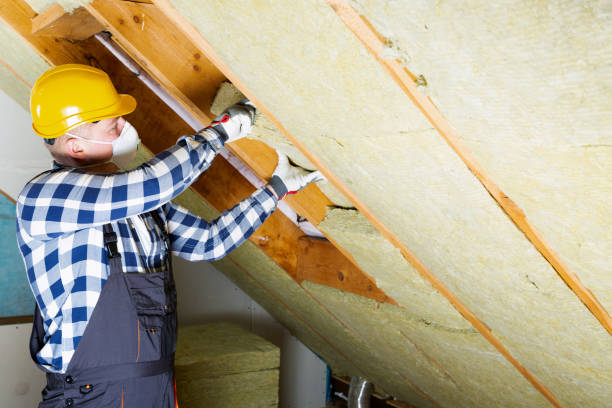
Insulation that has a higher R-value is sold at higher prices. The insulation’s value is based on:
● Insulation thickness
● Insulation type
● Insulation density
Generally, thicker insulation presents a high-insulating value. Other factors that influence the insulation’s R-value include the location and how well the insulation is installed. We recommend that you allow a professional to do everything for maximum effectiveness.
We also recommend that you go for an R-value of 15-30 for your floor and 30-50 for the roof. The exact value should depend on the climate of your location. It will help if you seek assistance from an expert since they will better understand the best R-value for your case.
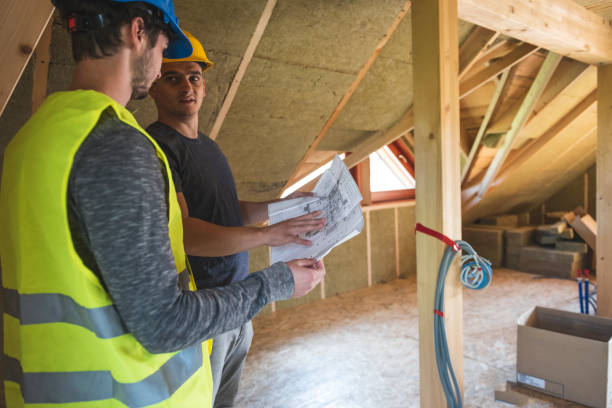
Areas Where You Must Consider Adding Insulation
There are critical areas in your mobile home that require serious insulation. Let’s consider these areas below:
Crawlspace (Mobile Home Belly)
Mobile homes are designed with a crawlspace, more commonly known as an underbelly. This area in particular becomes critical for insulation since it is where all of the plumbing lines are located.
This is the area where you will find pipes and plumbing units that deliver water to and from your home. If you let the pipes freeze during winter, they could burst. This translates into water damage and additional costs due to wasted water, cleanup, and pipe replacements. Learn more on how to unfreeze mobile home pipes here.
It is, therefore, important that you add insulation to your mobile home to improve the condition of your home’s underbelly and to achieve the ultimate in energy-efficiency.
Your Mobile Home Roof
Without question, the roof is among the most critical areas that require insulation. As most know, heated air will always rise. As this air rises, it can easily escape your home (air leakage) if you don’t have proper insulation, thus lowering the energy-efficiency of your space.
Having poor insulation in the roof will certainly translate into higher utility costs. This can be attributed to the HVAC appliances working harder and longer to keep your home comfortable.
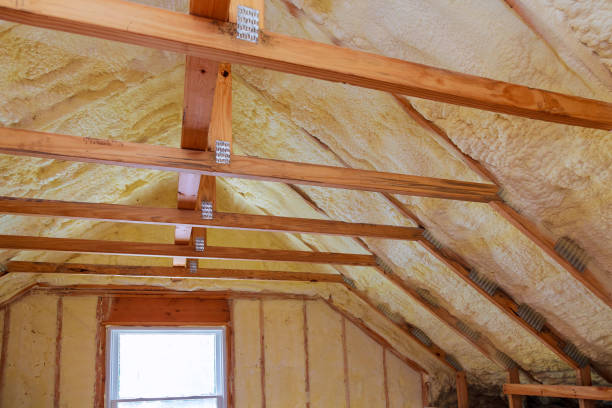
Since the roof is spacious with various building materials, it can be challenging to insulate it properly. The first step to insulating your roof will be adding a ceiling to your mobile home if it doesn’t have one. Luckily, most mobile homes come with ceilings.
You can then proceed by blowing insulation into the ceiling. We recommend employing the spray foam insulation or injection foam method to limit convection and conduction. The drill and plug method can also help you access the attic or ceiling with ease.
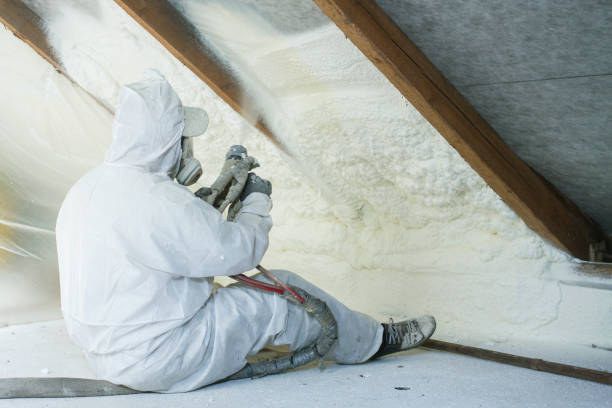
Blowing insulation into your mobile home’s attic could also be a good idea. While it is initially cheaper to do everything yourself, you will achieve better results by hiring a professional, thus more savings.
Insulating the Mobile Home Walls
After handling the roof, you can now focus on the walls. Remember, walls make up a lot of a mobile home.
Luckily, most mobile homes are already designed with insulation. However, the insulation is typically thin and has low R-values. For this reason, among others, you should consider adding insulation to the walls.
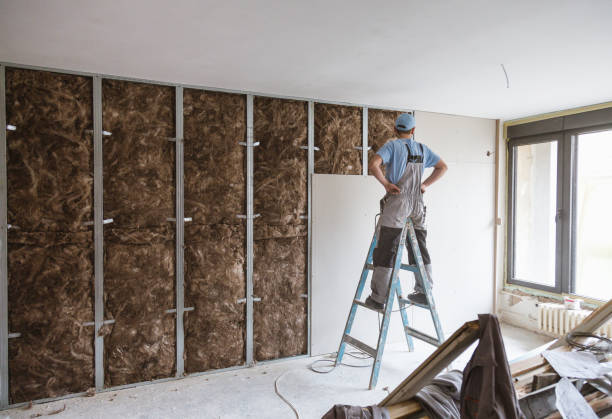
Since you have to get into the walls to manage the insulation, the task is very difficult. We recommend using the blow insulation or stuffing technique to insulate effectively in these areas. This presents a minimally invasive technique with exemplary results.
Windows and Doors of Your Home
These are among the most ignored areas in a mobile home insulation project. For your information, there are no specific window or door insulation types for manufactured homes. However, you can still implement measures to avoid drafty doors and windows. Such measures guarantee heat gain and heat loss, thus, keeping the utility costs low.
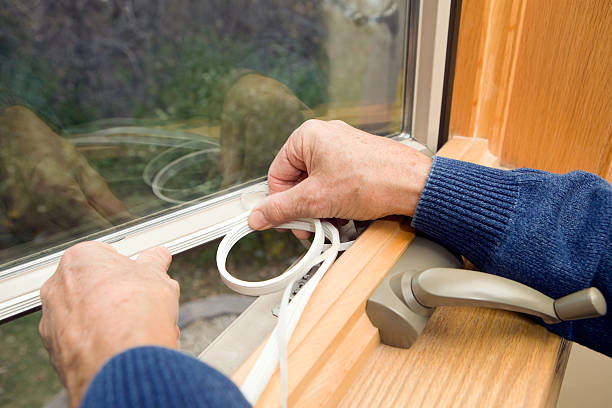
It is additionally important to inspect weather stripping and caulking around windows and doors. We also recommend replacing old windows and doors, and make sure that you install energy-efficient options. For this, consider windows with insulated vinyl frames. They will eliminate the need to employ storm windows. Apart from improving the interior and exterior of your manufactured home, energy-efficient options also reduce energy consumption.
Procedure of Insulating Under Your Mobile Home
If there is one area exposed to harsh elements, it is, without question, the underbelly of your mobile home. Insulating this area will undoubtedly improve the inside conditions of your home. In most cases, mobile home manufacturers insulate the units in the factory before the homes are installed.
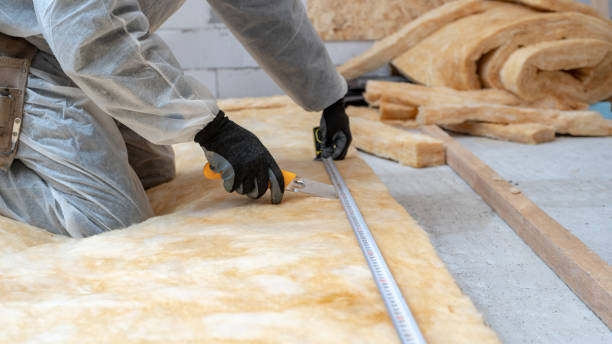
With that said, if the insulation becomes damaged, you can add new. If that is the case, below are steps to follow:
- Have a vapor barrier or air barrier on the surface below the mobile home before you start insulating. Here, we recommend using 6-mil polyethylene plastic sheeting. The purpose of the barrier is to restrict ground moisture from getting to the insulation. It also makes the surface more comfortable.
- Pry off the barrier under the mobile home with a flat-head screwdriver. The intent here is to remove staples. You should also remove screws using a Phillips screwdriver. Use a pry bar to get rid of nails. One side of your barrier should be attached to the underbelly’s rim joist.
- Use foam wrap insulation to cover water pipes. You also need to secure the pipes tightly against the mobile home’s underbelly.
- This is the time to inspect the seams between the joists and the floor. You should also inspect all the sections where wires and pipes go through the floor. If there are gaps, seal them with silicone caulk.
- Fill all cavities between joists using fiberglass batt insulation. You can employ paper-backed insulation, too, if you so choose. Just remember to have the paper facing the ground. Use a staple gun to staple the paper to the joists. This will hold them tightly in place.
- Use polyurethane foam insulation to fill any difficult to reach or small areas. Take necessary safety measures while applying foam insulation.
- Attach the road barrier back with the fasteners that were in place when you removed it. Make sure the barrier is in the best condition. You should also secure it properly to prevent cases of sagging.
Insulation Types to Consider for Your Mobile Home
Consider the following insulation types for your mobile home:
Roll or Blanket Insulation
This type of insulation is available in natural fiber and other natural materials, like plastic, wool, and fiberglass varieties. Thanks to its availability in major stores and ease of installation, you will like this insulation type. We recommend using it in places like the mobile home’s underpinning or attics.
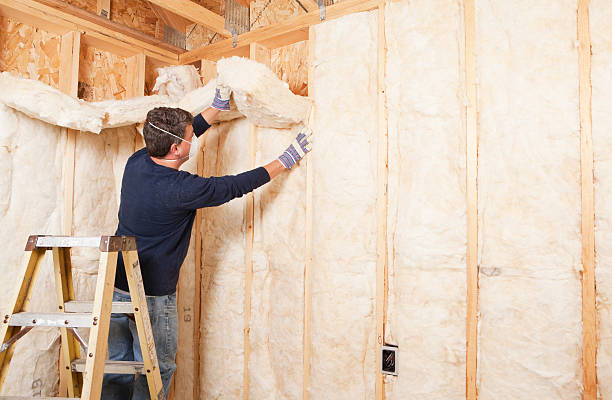
Just unroll the insulation and secure it into a certain area to apply it. Many people like roll insulation since it is easy to install.
Fiberglass Insulation
This is one of the most popular insulation materials you will ever find. Fiberglass insulation is commonly used in both commercial and residential projects. For your information, it is a fire retardant that can last for almost 100 years.
With that said, damages might occur after 15-20 years. When this happens, you should implement replacements immediately. You can get fiberglass insulation in styles of blown-in, batting, board, and rolls form. With fiberglass, you can easily make it a DIY project.
If installing yourself, we recommend either using blown fiberglass or batt insulation. We ultimately prefer blown fiberglass since it offers effective energy-efficient materials.
Rigid Foam Boards
If you are looking for very affordable insulation, foam insulation is the perfect solution for you. This insulation is also recommended for DIY jobs. With that said, it is rigid, thus, presenting some challenges in offering excellent insulation.
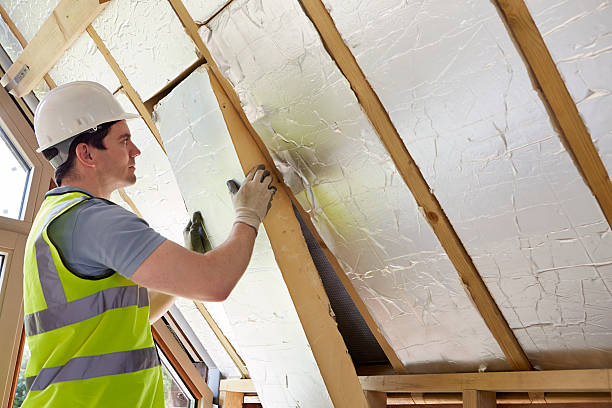
The advantage of this insulation is that you can either employ it to insulate full mobile home sections or just to patch holes in existing insulation. Rigid foam boards are developed from polystyrene or polyurethane, and we do not recommend it for mobile home ceilings and floors.
Rigid foam board is designed from:
● MEPS (Molded expanded polystyrene)
● EPS (Expanded polystyrene)
● Polyurethane sprayed/foam sprayed insulation (spray insulation)
● Foamed-in-place polyurethane insulation
● XPS (Extruded polystyrene)
Blow–In or Loose–Fill Insulation
This is sometimes called loose-fill insulation. It requires a high level of professionalism and top-level equipment to install the loose-fill, such as an insulation blower.
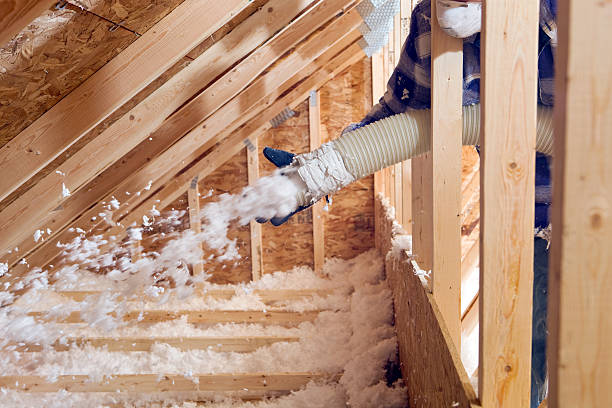
The first step here involves cutting a hole through the floor or ceiling that you intend to apply the insulation. You can then use a specialized compressor for pushing the insulation into that area. The insulation materials in such a case include wool or cellulose.
This insulation is very practical and is perfect for areas having oddly shaped spaces. However, the insulation is expensive, especially for starters.
Beads
Finally, there are beads, an insulation type that is affordable and easy to install. They are developed from polystyrene, and we highly recommend them for patching purposes.
What is more interesting is that these insulations are water-resistant. With that said, they present a lower R-value compared to other options.
Featured Image Credit: Brett & Sue Coulstock/Flickr under Creative Commons Attribution 3.0 Unported Licence




